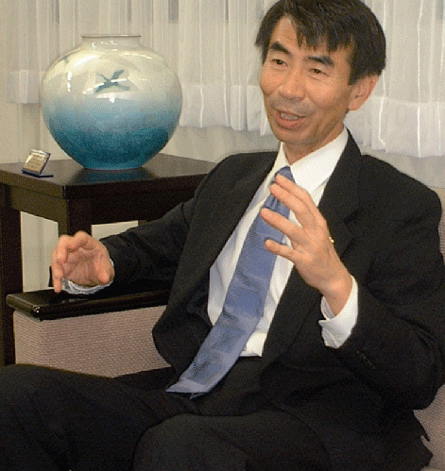Mitsubishi Heavy Industries has thrown the gauntlet at its aerospace business. Led by its new president Hideaki Omiya, who used to helm the segment, the conglomerate wants the aerospace division to become one of the company's key growth drivers.
If that task fazes Teruaki Kawai, who replaced Omiya as the head of MHI aerospace, he does not show it. For decades, Mitsubishi has been a supplier to Western airframe manufacturers.
For example, it is a tier-1 supplier for Boeing, making it a key cog in the wheel for the production of passenger aircraft including the Boeing, 787, 777, 767 and 737 series of aircraft. Now, it is taking its own step in that direction.
 |
|---|
© MHITeruaki Kawai: building a world class business |
"This is a very important and necessary step for the company," he says in an interview at his office in Tokyo. "All this while, we have been co-developers of aircraft and aerospace engines. By collaborating with manufacturers, we have grown our business and acquired technological know-how.
"MHI has decided that the aerospace segment will be a strategic part of the company, which means that it will make necessary investments in the medium- and long-term to transform it into a truly world-class business."
Moving away from an over-reliance on components manufacturing also makes sense as Japan has to compete with countries with a lower cost base. "There are tier-1 suppliers in China and Russia. Their numbers are growing and over the long term it will be difficult to sustain revenues from just this source only," says Kawai.
Manufacturing the 70-90-seat Mitsubishi Regional Jet is central to this plan, but MHI realises that it would be difficult to do it alone. That is why it floated Mitsubishi Aircraft to develop the MRJ, took a 67.5% stake, and sold the rest to companies like Toyota Motor (10%) and trading houses such as Mitsubishi Corp (10%), Sumitomo Corp (5%) and Mitsui & Co (5%).
"The initial development costs for the MRJ will be high and a burden for a few years. But MHI is willing to take that on board as we expect the business to grow and become one of our earning pillars in the future," says Kawai. "We have to ensure that the MRJ becomes a successful product."
After that, Mitsubishi Aircraft could use its experience on the MRJ to help Boeing with the successor to its 737 narrowbody. That is likely to be in the 100-120-seat segment, and Mitsubishi reiterates that it has no plans to compete with Boeing and Airbus in the large passenger aircraft field.
Just as Boeing and Airbus outsource some manufacturing to countries like Japan to lower costs, MHI is also looking outside Japan. It has just opened a subsidiary in Vietnam to manufacture components for the Boeing 737 flaps. "Vietnam is a test case for us as we have not had any experience with outsourcing yet. Of course, the lower costs are a benefit. But we would not do it if we felt that the country or the facility did not have the ability to produce components at the quality that we want. If this is successful, it is something that we could do more of in the future," he says.
The push into the commercial business complements its defence revenues. MHI has manufactured the T-2 advanced trainer and F-1 andF-15J fighters for the Japanese air force. Its production line for the F-2, which is based on the Lockheed Martin F-16, continues to operate. It also produces the UH-60JA utility helicopter and SH-60J anti-submarine helicopter.
However, the militarybusiness is likely to remain stagnant due to falling defence budgets. "That means that we must look for new sources of revenue in order to grow," he says.
This includes involvement in Japan's F-X competition to select a new generation of fighters, and the ATD-X programme to develop an indigenous stealth fighter.
"We would like to continue to license-produce fighters for the MoD through the next F-X competition. While this would increase our revenues, that is not the only reason. This will give MHI and Japan the production capability and help us to keep touch with the latest technology," Kawai says.
Source: Flight International
















